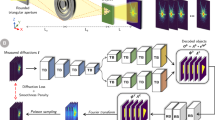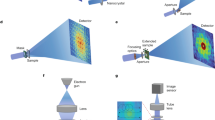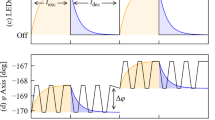Abstract
THE exposure times involved in obtaining X-ray diffraction patterns are an obstacle to the study of dynamic processes. Several workers have tried to devise visual presentations of the diffraction patterns from transient Crystallographic events, and recently Chester and Koch1 reported some success using a vidicon tube which was sensitive to X-rays and which had a complex diode mosaic as photocathode. Other workers, including ourselves, have used a phosphor as an image converter, the visual image produced by the phosphor being amplified by a high-gain image intensifier. We have had some success with an image intensifier that has a television read-out, but the equipment is expensive, cumbersome, and has to be custom-built. Here we report that acceptable results can be obtained using relatively cheap standard night surveillance equipment currently being produced in the USA and available in the UK. These units are designed to be carried in the hand or even mounted on a rifle and are extremely compact and portable.
This is a preview of subscription content, access via your institution
Access options
Subscribe to this journal
Receive 51 print issues and online access
$199.00 per year
only $3.90 per issue
Buy this article
- Purchase on SpringerLink
- Instant access to full article PDF
Prices may be subject to local taxes which are calculated during checkout
Similar content being viewed by others
References
Chester, A. N., and Koch, F. B., Adv. X-ray Anal., 12, 165 (1969).
Callahan, J. M., Automotive Industries, April 1, 1970.
Author information
Authors and Affiliations
Rights and permissions
About this article
Cite this article
TODD, G., TASKER, M. The Direct Viewing and Brief-time Recording of Crystallographic Events. Nature 238, 36 (1972). https://doi.org/10.1038/238036a0
Received:
Issue date:
DOI: https://doi.org/10.1038/238036a0



